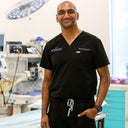If you have had augumentation in the past and had them out. Would having the surgery again to put them back in be as painful. Even if it is done under the muscle again?
Answers (27)
From board-certified doctors and trusted medical professionals
Dr. Steven H. Williams, MD

Dr. Steven H. Williams, MD
Board Certified Plastic Surgeon
Answer
Dr. Naveen Setty, MD

Dr. Naveen Setty, MD
Board Certified Plastic Surgeon
Answer
Dr. John Philip Connors III, MD

Dr. John Philip Connors III, MD
Board Certified Plastic Surgeon
Answer
Dr. Vincent N. Zubowicz, MD

Dr. Vincent N. Zubowicz, MD
Board Certified Plastic Surgeon
Answer
Dr. William Bruno, MD

Dr. William Bruno, MD
Board Certified Plastic Surgeon
Answer
Dr. Otto Joseph Placik, MD

Dr. Otto Joseph Placik, MD
Board Certified Plastic Surgeon
Answer
Dr. Raffy Karamanoukian, MD, FACS

Dr. Raffy Karamanoukian, MD, FACS
Board Certified Plastic Surgeon
Answer
Dr. Darrick E. Antell, MD, FACS

Dr. Darrick E. Antell, MD, FACS
Board Certified Plastic Surgeon
Answer
Dr. Manish H. Shah, MD, FACS

Dr. Manish H. Shah, MD, FACS
Board Certified Plastic Surgeon
Answer
Dr. Shahram Salemy, MD, FACS

Dr. Shahram Salemy, MD, FACS
Board Certified Plastic Surgeon
Answer
More Breast Implants Questions
See all Breast Implants Q&AWE SEND PRETTY
EMAILS
What’s trending? Who’s turning heads? Which TikTok myths need busting? We’ve got you. No fluff, no gatekeeping—just real talk. Get our free, unfiltered newsletter.